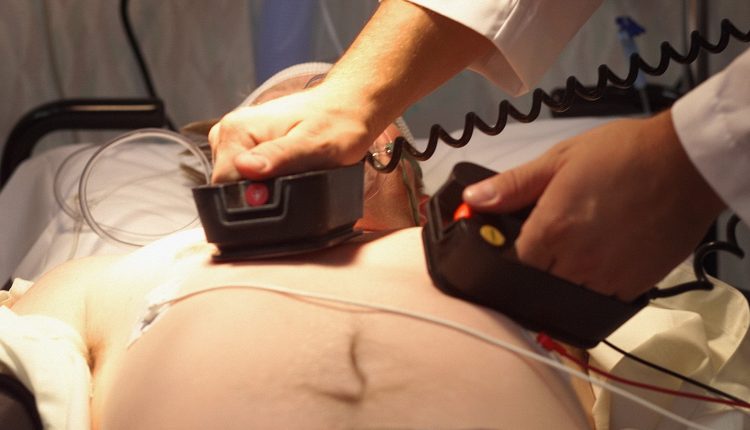
Difference between spontaneous, electrical and pharmacological cardioversion
Cardioversion is a special procedure that is carried out in the medical field when a subject has an arrhythmia, i.e. an alteration of the normal cardiac rhythm (sinus rhythm), in order to restore it while avoiding dangerous complications that can even lead to the patient’s death
Cardioversion can be
- spontaneous: when the arrhythmia stops spontaneously, within a few hours of its onset;
- non-spontaneous: when the arrhythmia does NOT stop spontaneously, in which case medical personnel must intervene as soon as possible to restore sinus rhythm.
Cardioversion can be performed in three ways
- mechanical: it is a manual mechanical defibrillation technique, characterised by the administration of a punch (precordial punch) on the sternum at heart level;
- pharmacological: drugs are administered with the aim of restoring sinus rhythm;
- electrical: an attempt is made to restore normal rhythm by delivering electrical impulses, which are administered via an external or internal defibrillator (ICD)
Cardioversion with precordial punch
The operator administers the precordial fist on the sternum at heart level, immediately withdrawing the hand (not leaving it resting on the patient’s chest).
The mechanical energy imparted by the fist should convert into sufficient electrical energy for cardioversion.
This manoeuvre should be performed in cases of cardiac arrest where a defibrillator is not available, i.e. in extreme emergency situations.
In rare cases it has actually allowed ventricular fibrillation or ventricular tachycardia to be converted into an effective heart rhythm, but more frequently it is ineffective or can even cause an opposite conversion, ultimately leading to asystole, which further aggravates the situation.
QUALITY DAE? VISIT THE ZOLL BOOTH AT EMERGENCY EXPO
Cardioversion by drugs
This procedure involves a relative latency of effect, i.e. a certain period of time elapses between the administration of the drug and the disappearance of the arrhythmia.
It is therefore reserved for arrhythmias that are well tolerated, either because the arrhythmia itself is benign, or because the patient is in good physical condition.
The drug, chosen according to the mechanism that sustains the arrhythmia, can be administered orally or by intravenous injection, according to predetermined dosages.
Electrical cardioversion
Particularly in cases where the arrhythmia is life-threatening (e.g. in ventricular fibrillation, which occurs in cardiac arrest) because it produces a serious haemodynamic compromise, electrical cardioversion is preferred to pharmacological cardioversion, which is extremely rapid and effective in many cases in interrupting cardiac malfunction, which if protracted would lead to the patient’s death.
The restoration of normal sinus rhythm is brought about by the application of an electrical stimulus, which has a virtually immediate effect.
As mentioned earlier, electrical impulses are administered in two ways, via
- external defibrillator: a very intense single electric shock is administered, which can be administered again if the sinus rhythm has not been restored. In this case we speak of cardioversion with shock, the kind we are used to seeing in films when there is a medical emergency;
- implantable cardiac defibrillator (ICD): this is an electrical device used in patients at higher risk of sudden cardiac death, such as those who chronically suffer from arrhythmias or Wolff-Parkinson-White patients. The ICD is surgically implanted subcutaneously in the pectoral region, preferably on the left, placing the electrodes in the atria and ventricles transvenously.Its use is based on the generation of small repetitive electrical impulses capable not only of performing effective defibrillation in 95% of cases, but also of providing physiological dual-chamber cardiac stimulation and remotely monitoring the rhythmic activity of the heart by discriminating between supraventricular and ventricular arrhythmias.
Cardioversion with shock and anaesthesia
In common practice, the electric shock administered with an external defibrillator can be applied in a synchronised manner with the patient’s ventricular activity, such as for persistent atrial fibrillation: in this case, since the patient is conscious and the electric shock is extremely uncomfortable, the procedure is only performed after general anaesthesia.
In emergency cases, on the other hand, e.g. in the case of ventricular fibrillation (cardiac arrest), the patient is already unconscious and the discharge is administered unsynchronously and without any anaesthesia: in this case we speak of defibrillation.
Read Also:
Emergency Live Even More…Live: Download The New Free App Of Your Newspaper For IOS And Android
‘D’ For Deads, ‘C’ For Cardioversion! – Defibrillation And Fibrillation In Paediatric Patients
Inflammations Of The Heart: What Are The Causes Of Pericarditis?
Do You Have Episodes Of Sudden Tachycardia? You May Suffer From Wolff-Parkinson-White Syndrome (WPW)
Knowing Thrombosis To Intervene On The Blood Clot
Patient Procedures: What Is External Electrical Cardioversion?
Increasing The Workforce Of EMS, Training Laypeople In Using AED



